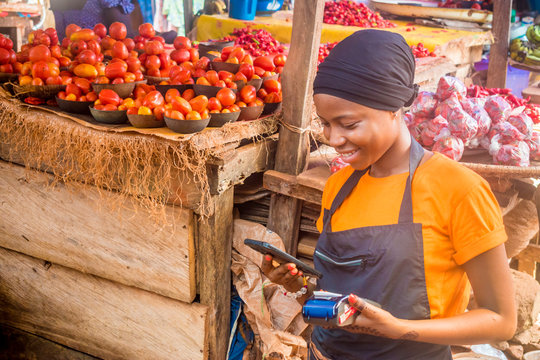🍔 Quick Bite: In Africa, businesses are the real engines of tech growth, connecting with hundreds of end users at a time. Selling to consumers directly often struggles against fragmented markets and low transaction values.
🧠 The Breakdown
Walk through any major African city and you’ll notice something. The mom-and-pop shop on every corner. The street vendor with a cooler of drinks. The small retailer who knows every repeat customer by name. These aren’t quaint relics of an old economy. They’ve become the backbone of how commerce actually works across the continent.
A significant number of startups building real scale in Africa have figured this out. OmniRetail processed ₦1.3 trillion (roughly $810 million) in transactions in 2024. Moniepoint hit unicorn status with a $1 billion valuation last year. The merged Wasoko-MaxAB entity supports 450,000 merchants across eight African countries. These companies sell to businesses that, in turn, sell to consumers.
And lately, Yellow Card shuttered its consumer mobile app in January 2026 to focus entirely on B2B stablecoin infrastructure. The reason, according to the company, was due to “strong and growing demand from businesses” and the need to “scale faster” with improved unit economics.
B2B models appear to be more effective in this part of the world, and there are reasons for that.
Following the money
Africa’s informal sector accounts for more than 85% of employment, according to 2024 data from the International Labour Organisation. That’s higher than any other region globally. An estimated 82% of all workers on the continent are in informal employment, compared to 56% in Latin America and 73% in developing Asia.
Most of these informal workers aren’t isolated individuals. They’re small businesses: the kiosk owner buying stock weekly, the street vendor restocking inventory, the neighbourhood shop serving dozens of customers daily.
For African B2C companies, going direct to consumers presents genuine challenges. Marketing costs accumulate quickly across fragmented markets with diverse languages, currencies, and regulations. Logistics and road infrastructure remain patchy in many regions. Payment systems work differently from country to country. When consumers do buy, transaction values remain low because purchasing power has not yet caught up to their aspirations.
Copia Global illustrates these hurdles. The company raised over $123 million to bring e-commerce to underserved communities but entered administration in May 2024 after failing to secure additional funding on investor-friendly terms. At its peak, Copia experienced rapid growth and a network of tens of thousands of agents; however, high operating costs and challenging unit economics led to the layoff of more than 1,000 employees before liquidation began.
Jumia is perhaps the continent’s most emblematic consumer e-commerce play—and a reminder of the structural limits of pure B2C models in Africa. Even Jumia found it hard to sustain a purely consumer-focused approach and launched “Jumia Delivery,” offering logistics-as-a-service to businesses. Twiga Foods has also shifted to an asset-light model by acquiring FMCG distributors to serve businesses more efficiently. Similarly, Glovo partnered with Salad Africa to provide SME financing, creating additional revenue through embedded B2B financial services.
The B2B equation works differently. One business customer typically represents hundreds of end users. Transaction values jump from single digits to thousands of dollars. Retention improves because businesses face real costs when switching suppliers or platforms.
Infrastructure companies benefit even more. Payments for businesses represent a vast opportunity: many African SMEs continue to run operations manually, and firms building digital rails capture recurring revenue because merchants handle customer acquisition themselves. Companies building digital rails capture repeat revenue whilst merchants handle consumer acquisition themselves. Moniepoint’s path to unicorn status ran through providing payment terminals, digital banking, and credit to small businesses.
The B2B advantage
B2B models in African markets create a particular kind of leverage. When you digitise a retailer’s operations, you touch every customer who walks through their door.
This approach sidesteps real problems. Customer lifetime value varies wildly across cities and neighbourhoods based on local purchasing power and competition. But a retailer serving 50 daily customers? That value proposition holds more steadily. Revenue becomes more predictable. Churn drops because switching costs actually matter to business customers.
The funding patterns suggest investors see this too. Two of the largest rounds last year went to B2B players: Moniepoint raised $110 million, and TymeBank pulled in $250 million. There has also been an increase in M&A activity within the ecosystem, with much of it driven by B2B consolidation.
This doesn’t mean consumer tech can’t work in Africa. Companies like Piggyvest and M-KOPA prove that it can. Yet even the most consumer-facing successes rely on infrastructure behind the scenes.
The sequencing might matter more than we acknowledge. Infrastructure often needs to exist before consumer applications can thrive at scale. Payment rails before consumer commerce. Identity systems before consumer credit. Reliable logistics before on-demand delivery.
Get passive updates on African tech & startups
View and choose the stories to interact with on our WhatsApp Channel
Explore




